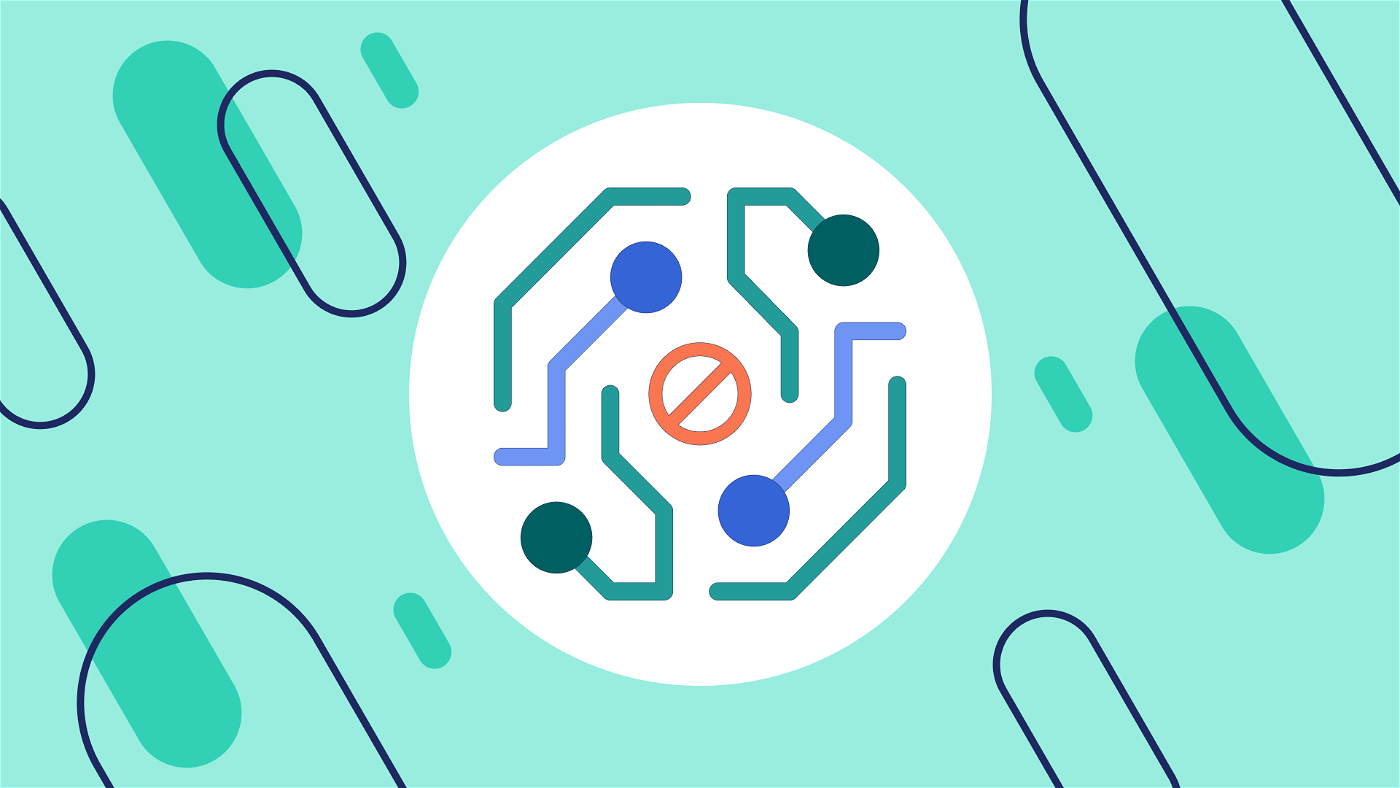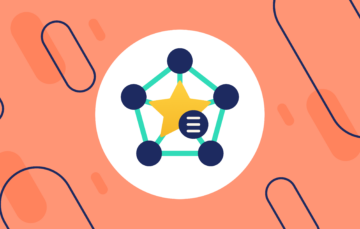
The integration of AI technology into healthcare has brought numerous benefits to patient safety and health with responsible application. This includes improved efficiency, accuracy, and patient outcomes. Responsible AI in healthcare means many things—establishing best practices, limiting bias, ensuring compliance and security—and this means AI in pharmacovigilance must play a critical role when building and training AI and machine learning (ML) models.
According to the World Health Organization (WHO), pharmacovigilance is described as “the science and activities relating to the detection, assessment, understanding and prevention of adverse effects or any other medicine/vaccine related problem.” When preventing adverse events, it is important for the AI model to help organizations remain pharmacovigilant, or to create a pharmacovigilance in AI.
Michael Armstrong, Chief Technology Officer, stated in Health IT Answers, “The most effective approach to avoiding — or at least significantly reducing — AI bias requires evaluating data and algorithms and leveraging best practices during the collection, utilization and creation of those AI algorithms.”
To achieve this, healthcare organizations must implement AI that is specifically designed for healthcare. These AI and ML models are trained on actual healthcare conversation data. Built by healthcare and AI experts, it is also validated by humans to ensure its reliability. Additionally, humans evaluate the model’s potential biases to reduce the chance of errors.
Armstrong continued to share the importance of responsible and ethical AI in Healthcare IT Today, “The industry needs human oversight to evaluate AI-generated recommendations. To avoid and prevent intentional (or accidental) misuse of AI systems, teams must monitor the performance of AI-enabled tools.”
By utilizing AI solutions, organizations can remain pharmacovigilant and significantly reduce the likelihood of adverse events. Patients can receive more personalized and efficient care, leading to better patient outcomes and data-backed decisions that meet business objectives. Integrating AI into healthcare with a focus on pharmacovigilance can improve the quality of care, streamline processes, and increase patient safety and industry compliance.
Steps to Build Responsible and Reliable AI
While AI has the potential to transform healthcare, due to the complex nuances and the necessary security of patient information (such as PHI), it is not without challenges. In helping to prevent adverse events, AI must be built alongside established frameworks to create trust, reliability, and accountability of the data source. There are integral steps to build AI that is responsible and responsive for pharma—and the application of them brings the patient voice to the forefront of decision-making.
Establish best practices for accountability and trust.
This involves being transparent about the AI algorithms being used and the data that informs them. Organizations must also take responsibility for any issues that may arise from the use of AI and be transparent about their efforts to mitigate them.
Implement continuous monitoring for compliance and security
This means continuously checking the AI system’s performance against established standards and regulations. Regular security checks can help identify potential vulnerabilities and ensure that the AI is secure.
Develop a system of human review for bias and risk
This means having a system of human review to identify and mitigate biases that can lead to unjust or invalid outcomes. AI can be exposed to risks in data that humans may not consider when building models, so having a system of human review can help catch risks before they become a problem.
Train the model with high-quality, diverse patient population data
This means training the model on diverse datasets to ensure that the AI is not biased against any specific group, product, service, or theme. Training on high-quality data lends a hand to the reliability of the AI in representing the whole patient population.
“AI bias requires evaluating data and algorithms and leveraging best practices during the collection, utilization and creation of those AI algorithms.”
Michael Armstrong, CTO | Authenticx
5 Ways AI Helps Prevent Adverse Events
With the help of artificial intelligence (AI) in data analytics, pharma can now take proactive measures to identify adverse events (AEs) and respond to their patients swiftly for improved care, minimized harm, less patient friction, and accurate regulatory reporting.
AI offers several benefits to help prevent adverse events, including risk assessment, predictive analytics, and automation. With real-time feedback, organizations can make quick decisions to ensure patient safety. Moreover, AI built with concepts of pharmacovigilance in mind improves the model’s training data and can implement responsible AI best practices that can significantly reduce the risk of adverse events in the long run.
AI in data analytics is revolutionizing the healthcare industry—especially pharma—by providing insights that were previously thought to be impossible to obtain. By leveraging AI, organizations and leaders alike can take proactive measures to help prevent adverse events, leading to patients receiving safe and effective treatments.
Monitoring Risk Assessment
In pharma, AI-powered data analytics tools play a crucial role in compliance efforts, preventing adverse events and identifying safety risks.
AI can monitor risks and safety in accordance with regulatory guidelines and help ensure that organizations are leveraging a reliable source of data. This is important because organizations are often inundated with conversation data that can make it difficult to collect and analyze manually. AI in data analytics can help assess the safety risks (safety signals) associated with different products, services, and brands. These tools can identify potential safety risks early, allowing for timely action to prevent issues that can become widespread adverse events.
By using AI, organizations can identify patterns and trends in patient conversations that might spotlight a successful launch or highlight instances of complaints or disruptions within the patient journey. Without utilizing advanced intelligence tools to help prevent adverse events, there is an increased likelihood that pharma can harm patient health, disrupt product delivery, tarnish brand reputation, create legal liability, and induce large penalties and fines.
For example, if AI identifies a potential safety risk associated with a newly launched therapy, it can alert the organization to take appropriate action, increasing the efficiency of the team involved and leading to the intended effectiveness of the treatment for patients who need it. This can help healthcare at all levels make informed decisions about patient care, ultimately leading to positive outcomes.
Automating with Predictive Analytics
The ability to predict adverse events before they become widespread market events is a crucial aspect of healthcare. Predictive analytics in AI allows agents, hubs, and leaders to automate data collection and analysis. This provides them with reliable trends and patterns that have emerged over time, both historically and in the present.
The impact of adverse events on healthcare is far-reaching, and it’s not just limited to the organization. Failing to report AEs or adverse drug events (ADEs) causes ripples across healthcare, so it is critical to abide by mandates and required guidelines from regulatory bodies, such as the FDA.
By utilizing predictive analytics with AI, pharma and compliance leaders can identify potential adverse events and take proactive measures to prevent them from happening, ultimately benefitting patients, healthcare organizations, and the industry as a whole.

Leveraging Real-Time Feedback
Healthcare is built on the foundation of providing quality care to patients. In this context, patient feedback and complaints play a vital role in determining the efficacy of services and products. With AI-powered data analytics, pharma leaders can now track and respond to patient feedback in real-time, enabling them to address any potential issues that could lead to adverse events.
Real-time feedback enables pharma and compliance leaders to take swift action and ensure that regulatory bodies receive reliable and honest reporting. It’s crucial to monitor adverse events, which can have consequences for both patients and pharma organizations. For example, if patients have issues with self-troubleshooting their medical device, they may not be able to use the device. Be it from connection disruptions, communication problems with agents, or actual device issues (such as broken buttons or cords), patient health is at an increased risk of nonadherence.
When pharma addresses issues in real-time, they prevent adverse events from occurring and maintain the trust of patients while remaining compliant in reporting with up-to-date information. By leveraging AI, pharma can identify patterns in patient conversations, allowing them to make data-backed decisions that contribute to better patient and business outcomes that help ensure compliance with regulatory standards.
Scaling Compliance with Regulations
With numerous safety and legal regulations in place to ensure the quality of care provided to patients, it is necessary to better listen to and understand what patients are saying. The increasing complexity of these regulations and the sheer volume of data that needs to be monitored makes it challenging for pharma organizations to ensure compliance with these regulations consistently.
The implementation of AI in healthcare with compliance monitoring can help ensure that pharma adheres to regulations. AI and ML can analyze vast amounts of data and identify patterns that may indicate noncompliance. This helps monitor the quality of care and helps prevent potential reporting issues that may lead to penalties and fines.
AI can help streamline compliance monitoring, allowing pharma companies to monitor compliance more efficiently and effectively. This reduces the time and resources required to track compliance — freeing up resources to focus on other critical areas of the business, such as patient support services. By leveraging the power of AI, pharma leaders can ensure compliance while identifying areas for improvement in the patient journey, in turn, promoting a safer and more trusting business environment.
Reviewing AI with Human Solutions
AI is only as good as the data it is trained on, and if that data is biased or incomplete (such as a diverse data set), it can lead to inaccurate or misleading results. To address this issue, leaders are turning to human review to limit bias and ensure the accuracy of data outputs. This process involves having experts in healthcare and AI technologies review the results of AI analysis to identify any invalid or biased results to better inform the model for future instances of similar contexts.
Human reviewers can identify potential biases that may have been introduced into the data, such as the underrepresentation of patient populations, the use of biased language in conversation data, or even implicit or unrecognized bias input by programmers. Evaluating the accuracy of the data generated by AI algorithms and identifying any potential errors or inaccuracies is an important step to building responsible AI for reliable use across healthcare.
By involving human experts in the review process, pharma leaders can make more informed decisions about their products, medications, or services, which can ultimately improve patient outcomes and quality of care. This additional (and necessary) step helps build trust in the AI and the data insights it shares to ensure tech ethics match business objectives.
Snapshot: AI in Pharmacovigilance Helps Prevents Adverse Events
Pharmacovigilance is a crucial aspect of patient safety and medical development and advancements, and with the help of AI, it has become even more effective in helping prevent adverse events for pharma organizations. Here are five ways in which AI is helping to prevent adverse events through pharmacovigilance:
- Patient Risk and Safety Assessment: AI can help detect patient risk factors that may increase the likelihood of an adverse event. AI analyzes large datasets, such as patient conversation data in hubs, contact submissions, chats, emails, and more. This allows a greater likelihood of preventing adverse events by identifying instances of growing concern through patterns and trends.
- Predictive Analytics and Automation: AI can help predict adverse events before they occur, allowing healthcare professionals to take preventative and proactive measures—rather than ones that reactively harm patient health and employee experiences.
- Reliable Reporting with Real-Time Feedback: AI can provide real-time feedback to pharma and compliance leaders, helping them to report adverse events accurately and quickly, and getting their teams prepared and trained to respond appropriately when an AE might be occurring.
- Compliance Monitoring at Scale: AI can monitor compliance with safety regulations at scale, ensuring that regulations are being followed by pharma organizations. This ensures that, beyond the need for quality care, companies do not run into reporting issues that incur penalties and fines.
- Limiting Bias Through Human Review: AI can help limit bias by having humans (experts in healthcare and AI) review the AI output for any invalid or biased results. Pharma leaders can then use this data to make data-backed decisions about their product, medication, or service.
Takeaways on Adverse Events:
- Pharmaceutical manufacturers are required to monitor and report any adverse events associated with their products to ensure patient safety. This includes detection, documentation, evaluation, reporting, and follow-up.
- The system to detect AEs often travels between agents listening for them, identifying them, documenting them — and then those conversations being reviewed again by managers or directors. This mandated reporting process is commonly high-risk, manually intensive, error-prone, and expensive.
- With AI solutions, review power can be directed only to conversations that are flagged for risk or known to contain an event unacknowledged or unreported.
- AI can transform and simplify compliance for pharma organizations by decreasing risk, directing resources, and improving outcomes — avoiding costly spend and meeting patient outcomes.
AI built with pharmacovigilance in mind means faster and more reliable detection of AEs. Pharma has the opportunity to listen to patients at scale to help prevent adverse events without taking human understanding and empathy out of healthcare. By analyzing large datasets, predicting adverse events, providing real-time feedback, monitoring compliance, and limiting bias, AI is growing more reliable for pharma leaders to implement across their organizations.
Leverage Authenticx AI to help monitor and identify adverse events.
Related Resources
Authenticx for Pharma Leaders | Scale Pharma Market Insights | Adverse Event Detection with AI | Call Center Compliance | HIPAA Compliance Call Center | Call Center Compliance Checklist
About Authenticx
Authenticx is the new standard for humanizing conversational intelligence in healthcare by analyzing millions of customer interactions (like voice, chat, or emails) to surface immersive and intelligent insights at scale. Authenticx was founded to aggregate, analyze and activate customer interaction data to surface transformational opportunities in healthcare. Using existing data that’s likely being stored and ignored in your organization, Authenticx reveals hidden barriers, motivators, and strategies so healthcare organizations can make confident, data-backed decisions. In 2023, Authenticx was ranked No. 349 on the Inc. 5000 recognized as one of America and Indiana’s fastest-growing private companies.
Want to learn more? Contact us!
Or connect with us on social! LinkedIn | Facebook | Twitter/X | Instagram | YouTube


